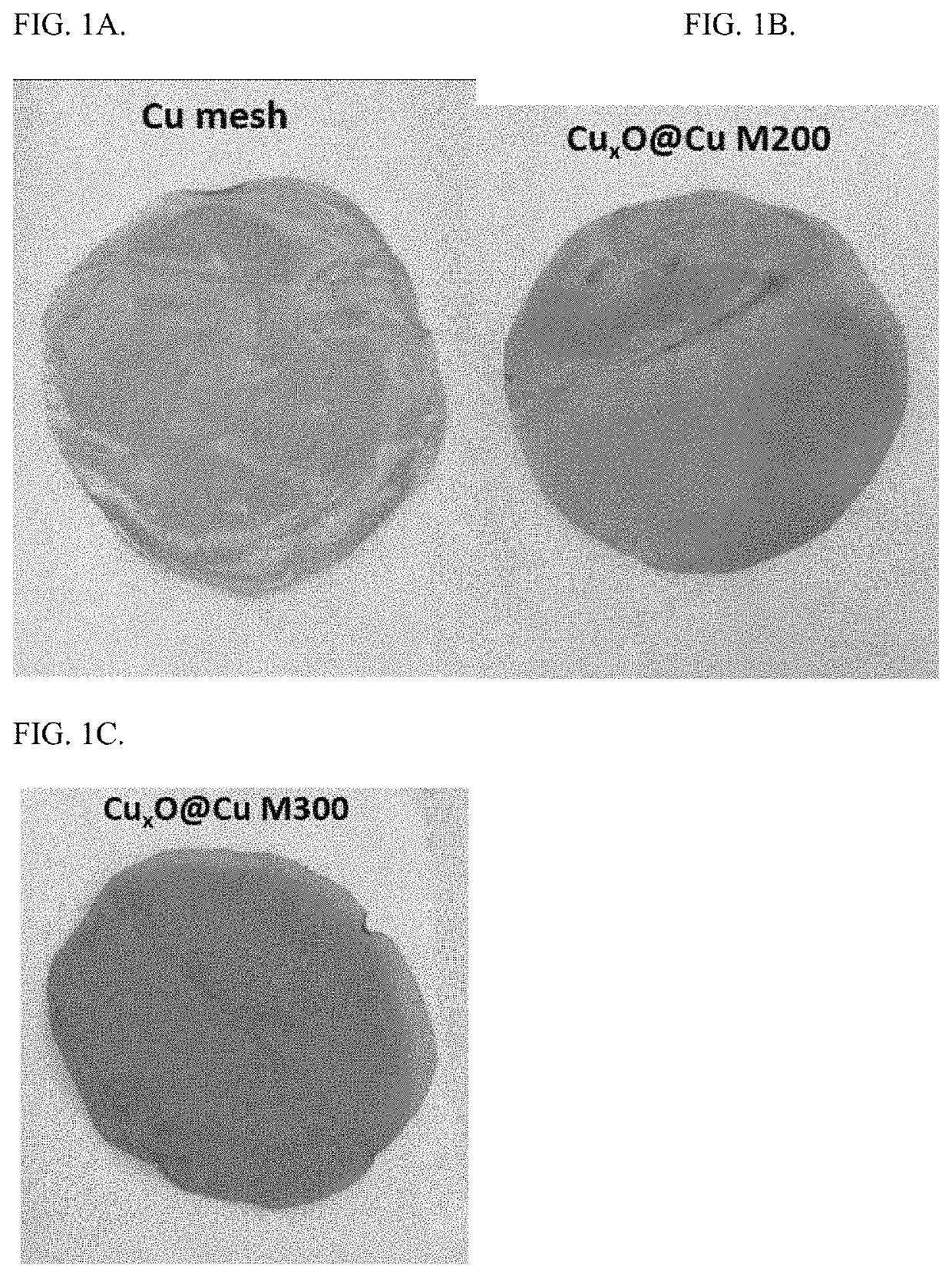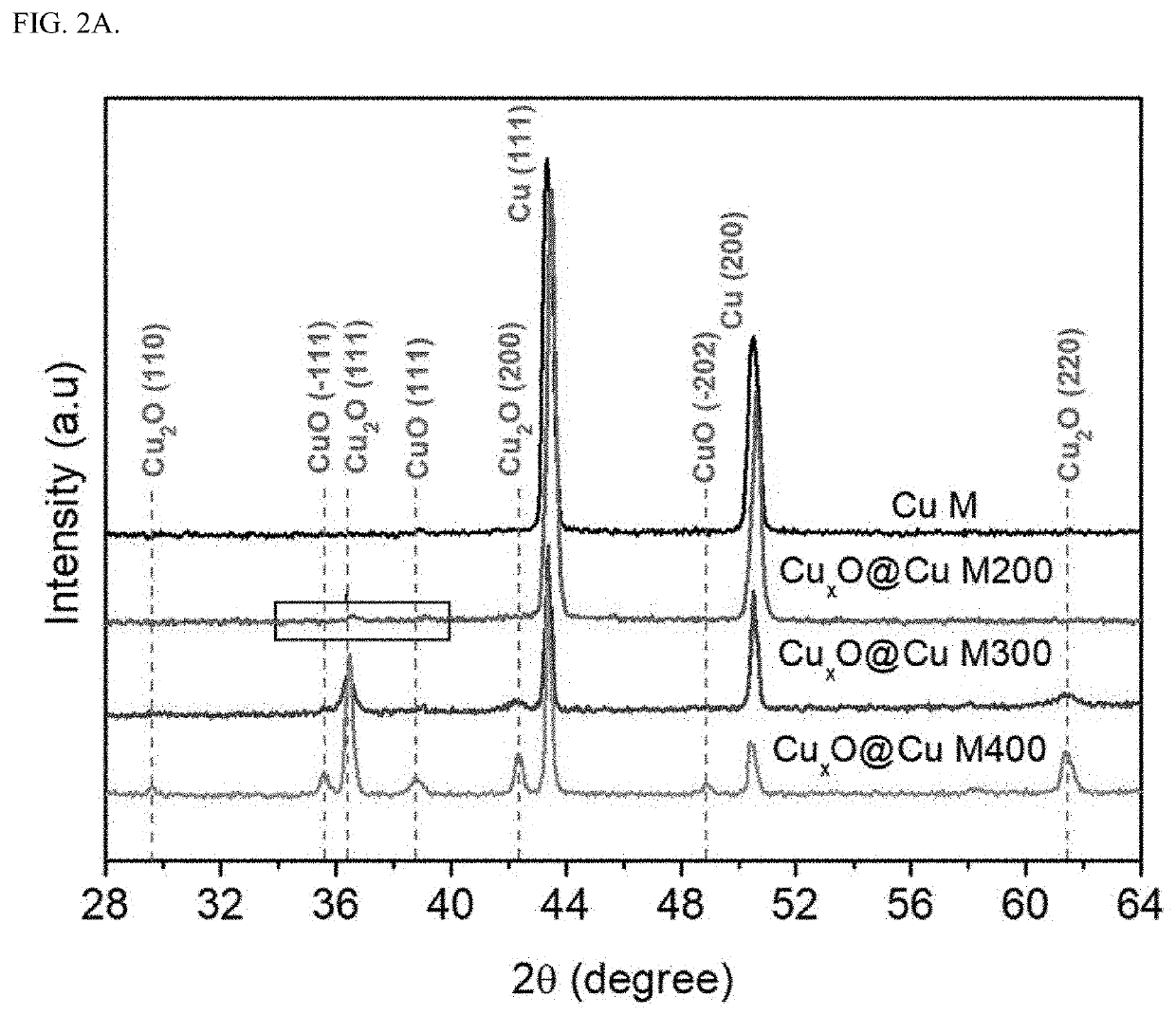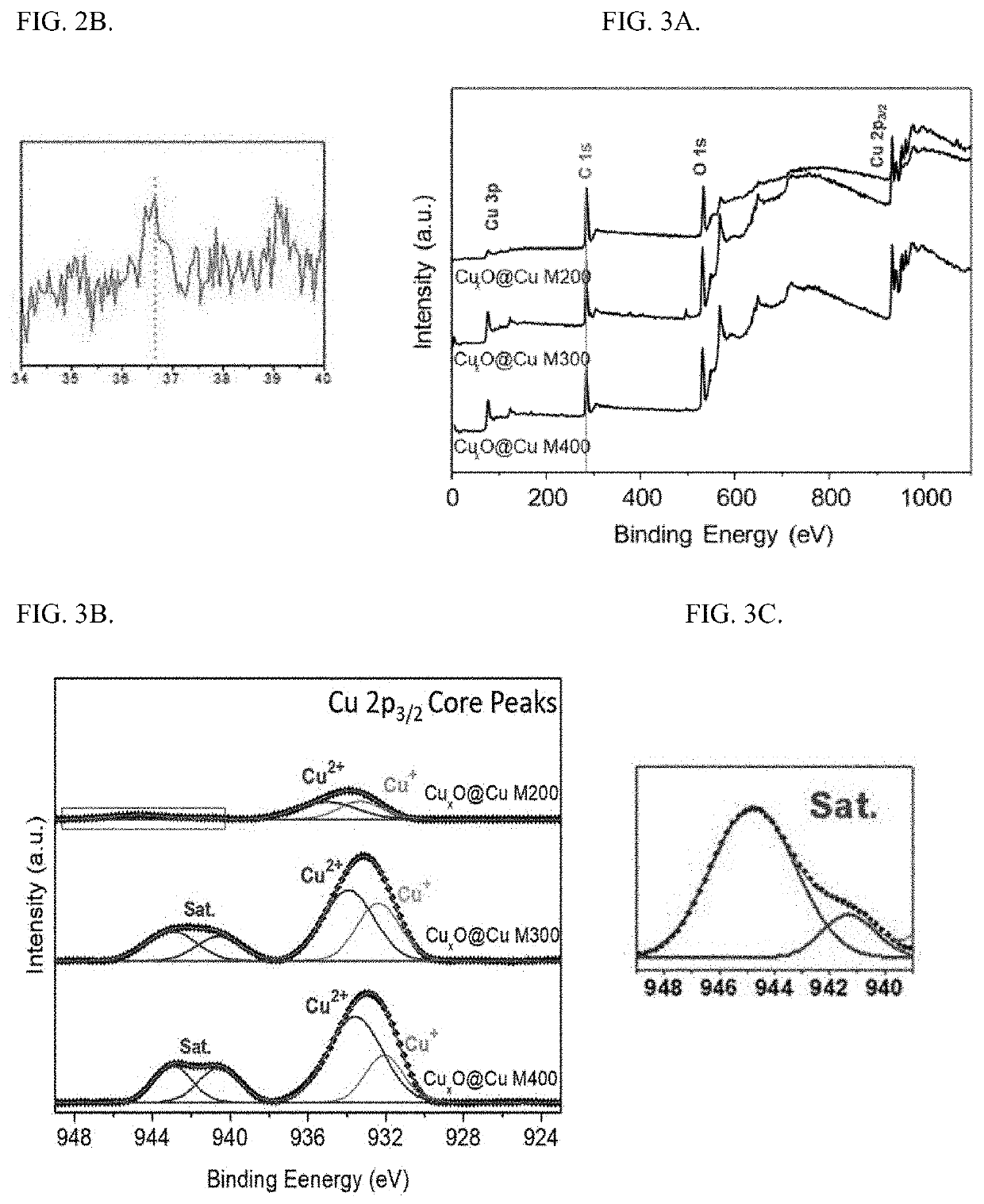Method of forming copper oxide-on-copper nanomaterial catalyst mesh
- Summary
- Abstract
- Description
- Claims
- Application Information
AI Technical Summary
Benefits of technology
Problems solved by technology
Method used
Image
Examples
examples
Material Fabrication and Characterization
[0105]This green synthesis method disclosed here is based on oxidizing a copper mesh using a spinach aqueous extract at relatively low temperatures. 20 g of washed spinach leaves were boiled in 100 mL of distilled water followed by doubled filtration through Whatman filter paper (no. 4). A commercial copper mesh (99.99% Cu, the Mesh Company, UK) was cut into circles (r=6 cm). All samples were cleaned ultrasonically and sequentially in 1M HCl, ethanol, and then distilled water (5 min each). The copper mesh substrates were then immersed into a beaker containing the spinach aqueous extract and kept at 90° C. for 1 h on a hotplate. In order to optimize the oxidizing temperature of the copper mesh, samples were annealed for 1 h in a box furnace at different temperatures (200° C., 300° C., and 400° C.) in air. The copper mesh that was heated at 200° C. is denoted here by CuxO@Cu M200, with the other samples following the same structure (CuxO@Cu M30...
PUM
| Property | Measurement | Unit |
|---|---|---|
| Temperature | aaaaa | aaaaa |
| Temperature | aaaaa | aaaaa |
| Fraction | aaaaa | aaaaa |
Abstract
Description
Claims
Application Information
 Login to View More
Login to View More - R&D Engineer
- R&D Manager
- IP Professional
- Industry Leading Data Capabilities
- Powerful AI technology
- Patent DNA Extraction
Browse by: Latest US Patents, China's latest patents, Technical Efficacy Thesaurus, Application Domain, Technology Topic, Popular Technical Reports.
© 2024 PatSnap. All rights reserved.Legal|Privacy policy|Modern Slavery Act Transparency Statement|Sitemap|About US| Contact US: help@patsnap.com










